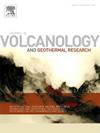沙特阿拉伯西部温泉远景地热田重力模拟
IF 2.3
3区 地球科学
Q2 GEOSCIENCES, MULTIDISCIPLINARY
Journal of Volcanology and Geothermal Research
Pub Date : 2025-03-02
DOI:10.1016/j.jvolgeores.2025.108307
引用次数: 0
摘要
本研究的重点是Wadi Al Lith(沙特阿拉伯西部)的地热远景区,其表现为温泉的存在。艾因阿尔哈拉温泉的地表温度超过80°C,是最有希望开发地热能源的地区。Wadi Al - Lith地热田是在红海裂谷演化过程中形成的。对温泉周围地区进行了陆地重力测量,建立了一个综合的地下模型。利用标准校正方法对数据进行处理,构建了该区域的布格异常图,并估计了储层的二维和三维地下几何形状。我们的分析表明,温泉遗址的重力值较低,基底岩石暴露的地区重力值较高。2D和3D模型是根据该地区浅层井眼和其他地球物理方法(MT、TEM和折射地震)的可用信息进行约束和解释的。该模型强调了有利于热流体向地表输送的构造构造和裂缝系统,表明可能存在地热储层。通过重建Ain Al Harrah温泉周边地区的详细地下模型,该研究强调了Wadi Al Lith可再生能源生产的潜力。在地球物理资料解释的基础上,提出了勘探和生产钻井方案。本文章由计算机程序翻译,如有差异,请以英文原文为准。
Gravity modeling of a prospective geothermal field of a hot spring in Western Saudi Arabia
The present study focuses on the geothermally prospective area of Wadi Al Lith (Western Saudi Arabia), which is expressed by the presence of hot springs. With a surface temperature that exceeds 80 °C, the Ain Al Harrah hot spring presents the most promising area for geothermal energy production. The Wadi Al Lith prospective geothermal field was generated by tectonic processes involved in the evolution of the Red Sea Rift. A land gravity survey of the area around the hot spring was conducted to develop a comprehensive model of the subsurface. The data were processed using the standard correction methods to construct the Bouguer anomaly map of the area, and the reservoir's 2D and 3D subsurface geometry was estimated. Our analysis revealed low gravity values at the hot spring site and high values in areas where the basement rocks are exposed. The 2D and 3D models were constrained and interpreted using available information from a shallow borehole and other geophysical methods (MT, TEM, and refraction seismic) that have been conducted in the area. The models suggest the possible existence of a geothermal reservoir by highlighting the tectonic structures and the fracture systems that facilitate the transport of thermal fluids to the surface. By reconstructing a detailed subsurface model of the Ain Al Harrah hot spring's surrounding area, the study highlights the potential of the Wadi Al Lith for renewable energy production. An exploratory and production drilling program is suggested, based on the interpretation of the geophysical data.
求助全文
通过发布文献求助,成功后即可免费获取论文全文。
去求助
来源期刊
CiteScore
5.90
自引率
13.80%
发文量
183
审稿时长
19.7 weeks
期刊介绍:
An international research journal with focus on volcanic and geothermal processes and their impact on the environment and society.
Submission of papers covering the following aspects of volcanology and geothermal research are encouraged:
(1) Geological aspects of volcanic systems: volcano stratigraphy, structure and tectonic influence; eruptive history; evolution of volcanic landforms; eruption style and progress; dispersal patterns of lava and ash; analysis of real-time eruption observations.
(2) Geochemical and petrological aspects of volcanic rocks: magma genesis and evolution; crystallization; volatile compositions, solubility, and degassing; volcanic petrography and textural analysis.
(3) Hydrology, geochemistry and measurement of volcanic and hydrothermal fluids: volcanic gas emissions; fumaroles and springs; crater lakes; hydrothermal mineralization.
(4) Geophysical aspects of volcanic systems: physical properties of volcanic rocks and magmas; heat flow studies; volcano seismology, geodesy and remote sensing.
(5) Computational modeling and experimental simulation of magmatic and hydrothermal processes: eruption dynamics; magma transport and storage; plume dynamics and ash dispersal; lava flow dynamics; hydrothermal fluid flow; thermodynamics of aqueous fluids and melts.
(6) Volcano hazard and risk research: hazard zonation methodology, development of forecasting tools; assessment techniques for vulnerability and impact.

 求助内容:
求助内容: 应助结果提醒方式:
应助结果提醒方式:


